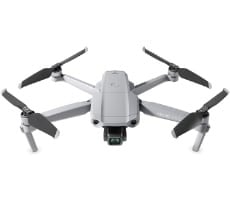Battery Life And How We Test:
In the following benchmarks we employ two very different battery life tests--Battery Eater Pro and a custom 1080p HD video loop test--to prove out battery life with our test group of machines. In all tests, Windows 10 Quiet Hours have been enabled and displays are calibrated with lux meters on pure white screens to as close to 115 lux as possible. For the average notebook this is somewhere between a 45 - 60% brightness setting, though it varies from machine to machine.
Since notebook displays significantly affect power consumption and battery life, it's important to ensure a level playing field with respect to brightness of the display for battery testing. However, since many notebook displays vary in brightness at each respective brightness setting in Windows, this calibration with the meter is also critical to ensure all displays are set to as near identical brightness as possible before testing.
 |
|
Battery Life Testing
|
|
Heavy-Duty Workload And Light-Duty Battery Life Performance Tests
|
|
Battery Eater works all subsystems including processor, graphics, memory and storage in its efforts to exhaust a battery as soon as possible. We have lots of legacy comparison data on this test, so we have a wider swath of numbers to compare to.
The HD video loop test, however, is new for us here, so we're still compiling reference numbers from a variety of different systems and notebook products.
As you can see, the HP Spectre did make trade-offs for thinness with respect to battery life. Under heavy load in our Battery Eater test, the Spectre's fans were spinning constantly and coupled with its robust Core i7 dual-core CPU, it drains the Spectre's understandably thin 38 WHr battery very quickly. However, under light duty workloads where the Spectre can breath a bit easier, it certainly fairs better, and finishes more in the middle of the pack. In our HD video loop test, the HP Spectre managed a little over four and a half hours of uptime before exhausting its battery.
HP Spectre 13 Thermals And Acoustics:
For an ultralight like the HP Spectre, we surprisingly were met with little to no throttling limitations, and the machine routinely took top honors in our benchmarks thanks to its fast CPU setup and nimble NVMe SSD. HP attributes this to the Spectre’s Hyperbaric cooling system where the fans intake cool air from the outside and create significant air pressure inside the chassis to force away heat away. You can see the intake vents for this on the bottom side of the machine, while warm air exhaust pushes through a vent on the Spectre's gold colored aluminum rear plate. It’s very effective and the Spectre also stays cool under pressure with no major noticeable hot spots to the touch. Again, during our benchmark gauntlet, we didn't observe throttling, though extended heavy workloads, like gaming, may ramp up thermals over time. Also, unfortunately you do hear a bit of fan whine occasionally, though it’s not a showstopper. The Spectre is definitely not one of the quietest 13-inch machines I’ve ever heard, but it’s not the loudest either, though it does spin up randomly and not always just under load.









